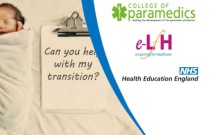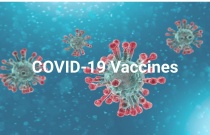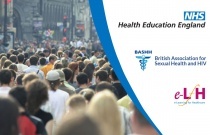Staffing in public health facilities after the Ebola outbreak in rural Sierra Leone: How much has changed?
James Sylvester Squire,Katrina Hann,Olga Denisiuk,Rony Zachariah
The Ministry of Health and Sanitation of Sierra Leone has stipulated minimum staffing levels for all public health facility levels based on the Basic Package of Essential Health Services (BPEHS). The post-Ebola period presented an opportunity for the Government of Sierra Leone to devise a health services investment plan. This in....
Seasonality of birth defects in West Africa: could congenital Zika syndrome be to blame?
Maimuna S. Majumder,Rosanna Hess,Ratchneewan Ross,Helen Piontkivska
Since 2015, when an initial link between Zika Virus (ZIKV) and microcephaly was discovered in Braziln
Prevalence of intestinal parasites among food handlers attending public health laboratories in Khartoum State, Sudan
Tarig A. Gamar,Hassan H. Musa,Hisham N. Altayb,Mogeeb Kabbashi,Yassen Alsayed,Adam D. Abakar
In developing countries, intestinal parasitic infections remain a significant cause of mortality and morbidity. Soil-transmitted helminth (STH) and other helminth parasites like. Polluted soil and water sources, and poor personal hygiene are the major factors in the transmission of parasitic infections to humans through the feca....
Candida antifungal drug resistance in sub-Saharan African populations: A systematic review
Charlene Wilma Joyce Africa,Pedro Miguel dos Santos Abrantes
species are known to shift from commensal to opportunistic infectious agents when triggered by factors such as immunosuppression, continuous usage of antibiotics and poor nutrition, leading to increased patient morbidity and mortality. Various antifungal drugs with different modes of action have been developed over the years. Th....
Trends and determinants of contraceptive method choice among women aged 15-24 years in Kenya
Wambui Kungu,Alfred Agwanda,Anne Khasakhala
Kenya has invested considerable resources towards improving adolescent sexual reproductive health (ASRH) and has in place the 2015 National Adolescent Sexual Reproductive Health (NASRH) Policy; however, the rates of teenage pregnancies do not reflect these heavy investments and are a matter of public health and social concern. T....
Impact of COVID-19 on utilization of maternal, newborn and child health services in Nigeria: protocol for a country-level mixed-methods study
Godwin Akaba,Osasuyi Dirisu,Kehinde Okunade,Eseoghene Adams,Jane Ohioghame,Obioma Obikeze,Emmanuel Izuka,Maryam Sulieman,Michael Edeh
The Sustainable Development Goals agenda is part of the global efforts to improve maternal, new-born and child health (MNCH) by challenging countries to make efforts to reduce the global burden of maternal, new-born and child mortality. In Nigeria, MNCH outcomes have improved over the last decade. However, these outcomes are sti....
A predictive model for daily cumulative COVID-19 cases in Ghana
Abdul-Karim Iddrisu,Emmanuel A. Amikiya,Dominic Otoo
Three months after the emergence of the coronavirus (SARS-CoV-2) in China, about 118,000 confirmed cases and 4,291 associated deaths were reported globally. The disease spread so rapidly that in less than half a year, the World Health Organization (WHO) declared it a global pandemic.. However, various governments, health stakeho....
Slowly But Surely: Opioids in Renal Failure and Dialysis Patients
Akshay Athavale and Professor Maria Cigolini
Learn more about Opioids in Renal Failure and Dialysis Patients.
Administration of Drugs by Intravenous Injection
Henry Fok and Kerry Layne
This session explains the reasons why intravenous injections are sometimes the preferred route of drug administration, how to prepare and inject a drug intravenously, and illustrates some of the complications that might arise.
Sickle Cell Disease: Genetics and Diagnostics
The Hospital for Sick Children (SickKids) and Ghana College of Nurses and Midwives
Sickle Cell Disease in Ghana: Genetics and Diagnostics is a course that provides healthcare workers with a foundational understanding of sickle cell disease. The course features interactive content that will explain what sickle cell disease is and the genetics underlying this inherited blood disorder. Finally, the importance of....
Newborn Life Support
Aimee Yarrington
The aim of this session is to provide an understanding of the clinician’s role in dealing with newborn life support.
Advanced Paediatric Life Support
Sally Wilmhurst
This session addresses the advanced management of the critically ill child and the child in cardiac arrest.
Medical Assessment and Management of Obesity
Helen Croker and Russell Viner
This session will describe the key elements in the medical assessment and management of adolescent obesity and its relation to type 2 diabetes and insulin resistance. It will also cover the identification of secondary causes of obesity.
Peripheral Vascular Disease Leg Ulcers
Alan Elstone and Devender Mittapalli
This session provides an introduction to the key facts surrounding the development and management of lower limb ulceration. It presents an overview of the common aetiologies and symptoms and considers the interventional and conservative management available.
Identifying Unhealthy Weight and Risk Factors for Weight Gain
Jamie Blackshaw
This session looks at how to measure excess weight in children and adults, and discusses the causes of obesity including those that may present outside of lifestyle-related obesity.
Introduction to Obesity
Jamie Blackshaw
This session aims to provide you with an overview of overweight and obesity in children and adults in the UK. Obesity is a serious and wide spread public health issue, which has a disproportionate impact on the most deprived families. This session will touch upon the physical, psychological and social issues that can manifest du....
RESPECT Workshop: A Toolkit
The International Confederation of Midwives (ICM)
Respectful maternity care is not a tick list or something that can be fixed by a simple intervention. RMC is a choice and is embedded in our beliefs, attitudes, interactions, service delivery, organisation structures and professional codes. The aim of this RESPECT toolkit and workshop is to help raise awareness about how crucial....
The Role of the Professional Nurse Advocate
Emma Wadey, Sarah Legood
This session will explain the role and function of a professional nurse advocate (PNA) and how the role facilitates the 4 functions of the Advocating for Education and Quality Improvement (A-EQUIP) model. This elearning session is suitable for: - any healthcare professional who wishes to know who and what a PNA is - nurses....
Back Pain With Red Flags
Jon Greenwell
This session discusses the common causes of serious pathology in back pain and the red flags that patients present with that would increase your clinical suspicion. Common signs and symptoms are presented. This session was reviewed by Khyati Bakhai and last updated in January 2020.
Elbow Pain
Satpal Shekhawat
This session provides essential information on the common causes of pain in the elbow, their associated diagnoses and recommended treatment, as well as an overview of elbow anatomy. This session was reviewed by Khyati Bakhai and last updated in January 2022.
New Lung Cancer Diagnosis and Management
Santino Capocci
This session discusses the investigation and initial management of patients with suspected lung cancer, either in clinic or as in-patients, covering the important questions in the history, salient examination points and investigations before a multidisciplinary team discussion.
Sexual Problems: Part 2
Karl Hollows and Shalini Andrews
This session will discuss the links between sexually transmitted infections (STIs) and sexual problems before focusing on some basic aspects of management of patients with these issues.
Sexual Problems: Part 4
David Goldmeier and Ali Mears
This session looks at some definitions of sexual desire and arousal as well as the causes and management of absent or low sexual desire and arousal in women. It covers simple management and arranging onward referral for female patients with these problems.
The Epidemiology of STIs and HIV in the UK and Internationally
Stephanie Migchelsen, Tika Ram, Ian Simms, Gwenda Hughes
This session covers the epidemiology of sexually transmitted infections (STIs) in the United Kingdom.


















